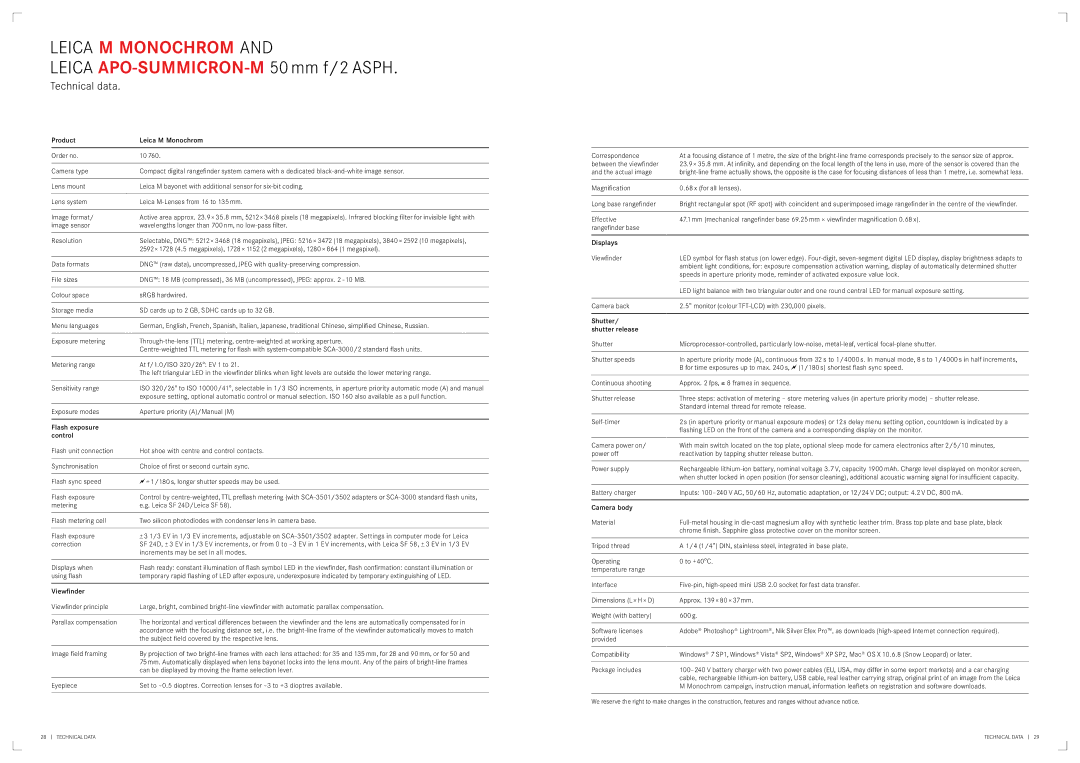10760, 10771 specifications
The Leica 10771 and 10760 models represent a pinnacle of craftsmanship and technological advancement in the world of high-performance camera systems. Leica, a brand synonymous with quality since 1914, continues to uphold its legacy with these remarkable pieces of engineering.The Leica 10771, featuring the renowned SL2 format, combines a 24-megapixel full-frame sensor with an advanced L-Mount system. This sensor provides stunning clarity, depth, and detail, ensuring that every image captures the essence of the moment. The SL2’s image processing engine is designed to deliver brilliant color rendition and expansive dynamic range, making it an exceptional choice for both professional photographers and enthusiastic amateurs alike. The camera's ISO performance is another highlight, allowing for spectacular low-light capabilities, which is essential for evening events or indoor shooting scenarios.
The robust build quality of the Leica 10771 is a testament to the brand's commitment to durability. The body is constructed with magnesium alloy, ensuring that it can withstand the rigors of professional use while remaining lightweight and easily portable. Additionally, the weather-sealed design allows photographers to work confidently in challenging conditions, whether it’s rain, snow, or dust.
On the other hand, the Leica 10760 shines with its compact design and versatility. This model is tailored for those who seek a lightweight option without sacrificing image quality. It features a more streamlined body, making it perfect for street photography or travel. Although smaller, the 10760 doesn’t compromise on performance, featuring a powerful 20-megapixel sensor with impressive dynamic range and low-light capabilities. The camera’s fast autofocus system ensures that even the most spontaneous moments are captured with precision.
Both models leverage Leica’s innovative lens design and exceptional optics to produce images characterized by a unique aesthetic quality. The ability to employ a wide range of high-performance lenses via the L-Mount system enhances creative possibilities, allowing photographers to explore various styles and techniques.
In summary, the Leica 10771 and 10760 encapsulate the brand's heritage of excellence with their impressive features and functionalities. The SL2’s robust performance combined with the compactness of the 10760 provides a comprehensive toolkit for photographers who demand high quality and reliability in their work. Whether shooting landscapes, portraits, or street scenes, these models elevate the photographic experience to new heights.

